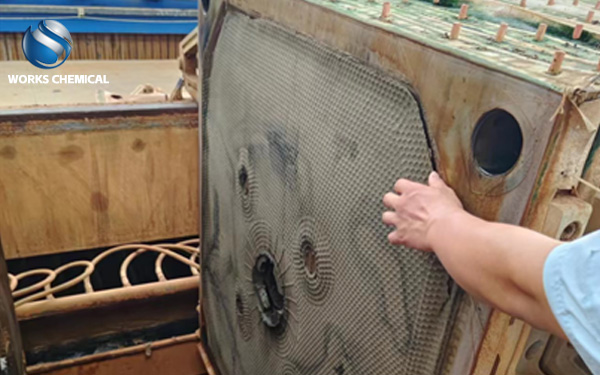
In view of the problems of less feed and thin mud cake in municipal sludge treatment equipment, combined with industry technical data and equipment operation principle, the reasons are analyzed from three dimensions of equipment, operation and sludge nature, and systematic solutions are provided:

Analysis of core reasons
One. Equipment factors
Blockage problem
The inlet pipe/filter cloth is blocked: the pipe is narrow or the filter cloth pores are blocked by the fibers and grease in the sludge, resulting in increased feed resistance.
Track/filter block: After the long-term operation of the belt filter press, the residual sludge in the filter gap reduces the dehydration efficiency.
Device aging or fault
Reduced pump performance: Feed pump wear or insufficient speed, unable to provide sufficient pressure.
Hydraulic system failure: the plate and frame filter press oil pump is damaged, the relief valve is stuck, resulting in insufficient press pressure.
Structural problem
Improper selection of filter cloth: the filter cloth aperture is too small or the material is not wear-resistant, easy to be damaged or blocked.
Two. Improper operation parameters
Feed pressure does not match flow
Insufficient feed pressure (such as belt filter press belt speed too fast), sludge is not fully dehydrated that discharge.
Press time and tension setting error
The press time of the plate and frame filter is insufficient, or the tension of the belt filter is too small to squeeze out water.
Abnormal dosage
The type or concentration of the agent is not appropriate, the sludge does not form effective floc, blocking the filter cloth.
Three. Effect of sludge properties
High water content and viscosity
The moisture content of the sludge exceeds 98% or the viscosity is too large (such as containing industrial grease), and the difficulty of dehydration increases sharply.
Uneven particle distribution
The proportion of fine particles (<0.1mm) is too high, easy to penetrate the filter cloth; Coarse particles clog the inlet.
Abnormal organic matter content
Too much protein or colloidal substance, need to adjust the pH value or add coagulant aid.
Two, systematic solutions
One. Equipment maintenance optimization
Regular cleaning and replacement
Check the filter cloth/filter belt daily, rinse with high pressure water when blocked; Treat stubborn blockages weekly with pickling or ultrasound.
Replace the aging filter cloth every quarter, choose a wear-resistant material (such as polyester + nylon composite).
Upgrade key components
Upgrade the ordinary feed pump to a screw pump and increase the pressure to 0.8-1.2MPa; The hydraulic system is equipped with pressure sensors for real-time monitoring.
Two. Adjustment of operation parameters
Pressure and Flow control
Plate and frame filter press: the initial feed pressure is set at 0.4MPa, and the press stage is gradually increased to 1.5MPa.
Belt filter press: the belt speed is reduced to 2-3m/min, and the filter tension is adjusted to 0.3-0.5MPa.
Pharmaceutical optimization
The best amount of PAM was determined by beaker experiment (usually 2-5‰ dry weight of sludge), and cationic type (for organic matter) was preferred.
Three. Sludge pretreatment and strengthening
Chemical conditioning
Lime (pH 11-12) was added to break the colloid, or ferric chloride (FeCl₃) was added to reduce the viscosity.
Physical improvement
Use the predewatering machine to reduce the sludge moisture content from 98% to below 95% and then enter the filter press.
Four. Intelligent monitoring and warning
Install iot sensors to monitor feed pressure, mud cake thickness and other parameters in real time, and automatically alarm when abnormal.
Establish the equipment digital twin model, predict the filter clogging risk, and optimize the maintenance plan.
Three Typical case reference
A municipal sewage treatment plant increased the thickness of the mud cake from 3mm to 8mm and reduced the moisture content to less than 65% through the following measures:
Increase the tension of the belt filter press from 0.2MPa to 0.4MPa;
Optimized PAM dosage (from 1.5kg/t DS to 2.0kg/t DS);
Clean the filter with citric acid monthly to restore the porosity.
Through the above measures, the problems of less feed and thin mud cake of sludge treatment equipment can be systematically solved, the treatment efficiency can be improved by more than 30%, and the operating cost can be reduced. It is recommended to develop a personalized plan according to the specific model of the equipment and the characteristics of the sludge.